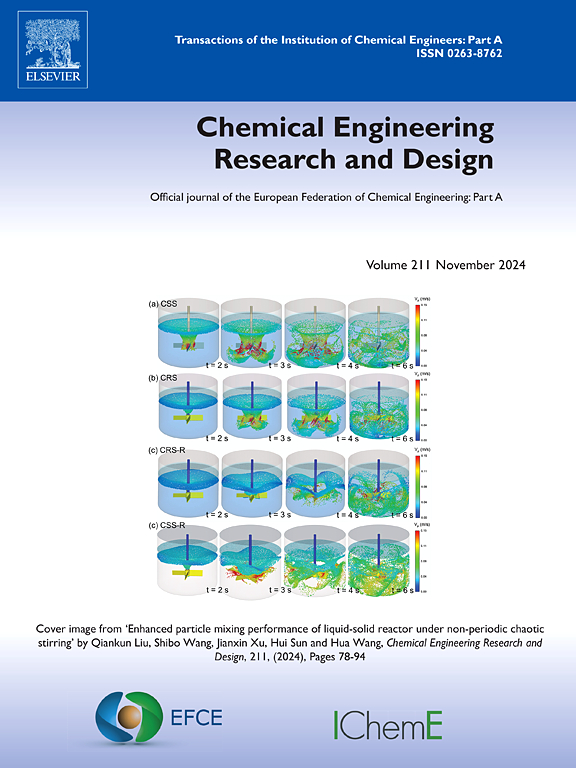Study on the dust migration rule and optimal ventilation parameters in tunnel drilling and blasting under forced ventilation
IF 3.7
3区 工程技术
Q2 ENGINEERING, CHEMICAL
引用次数: 0
Abstract
Dust generated by tunnel drilling and blasting seriously harms workers' health. To ensure the personal safety of construction personnel and create a clean working environment, this study, in combination with the actual engineering background and on-site monitoring data, simulates the interaction between the airflow field and the dust field under forced ventilation conditions. The distribution characteristics of the airflow field and the dust migration law are investigated at heights of 0.3 m and 1.5 m. The results show that the recirculation zone formed on the farthest side of the air duct has a relatively high wind speed and serves as the main carrier for transporting dust particles. In contrast, the eddy current zone far from the outlet of the air duct has complex and disordered airflow, which significantly inhibits the transportation of dust. The density of dust particles is the decisive factor for the decline rate of dust concentration. There is more dust accumulation at the lower level, and the diffusion is slower. The reliability of the simulation results is verified by the on-site monitoring data. Further research on the ideal ventilation parameters of the tunnel indicates that the ideal ventilation wind speed is 15 m/s, and the ideal distance between the air duct and the working face is 40 m.
强制通风条件下隧道钻孔爆破粉尘迁移规律及最佳通风参数研究
隧道钻孔爆破产生的粉尘严重危害着工人的身体健康。为保证施工人员的人身安全,创造清洁的工作环境,本研究结合实际工程背景和现场监测数据,模拟了强制通风条件下气流场和粉尘场的相互作用。研究了在0.3 m和1.5 m高度处的气流场分布特征和粉尘迁移规律。结果表明:风道最远侧形成的再循环区风速较大,是输送粉尘颗粒的主要载体;相比之下,远离风道出口的涡流区气流复杂无序,明显抑制粉尘的输送。粉尘颗粒密度是影响粉尘浓度下降速率的决定性因素。低层粉尘积聚较多,扩散较慢。现场监测数据验证了仿真结果的可靠性。对巷道理想通风参数的进一步研究表明,巷道理想通风风速为15 m/s,风管与工作面的理想距离为40 m。
本文章由计算机程序翻译,如有差异,请以英文原文为准。
求助全文
约1分钟内获得全文
求助全文
来源期刊

Chemical Engineering Research & Design
工程技术-工程:化工
CiteScore
6.10
自引率
7.70%
发文量
623
审稿时长
42 days
期刊介绍:
ChERD aims to be the principal international journal for publication of high quality, original papers in chemical engineering.
Papers showing how research results can be used in chemical engineering design, and accounts of experimental or theoretical research work bringing new perspectives to established principles, highlighting unsolved problems or indicating directions for future research, are particularly welcome. Contributions that deal with new developments in plant or processes and that can be given quantitative expression are encouraged. The journal is especially interested in papers that extend the boundaries of traditional chemical engineering.
 求助内容:
求助内容: 应助结果提醒方式:
应助结果提醒方式:


